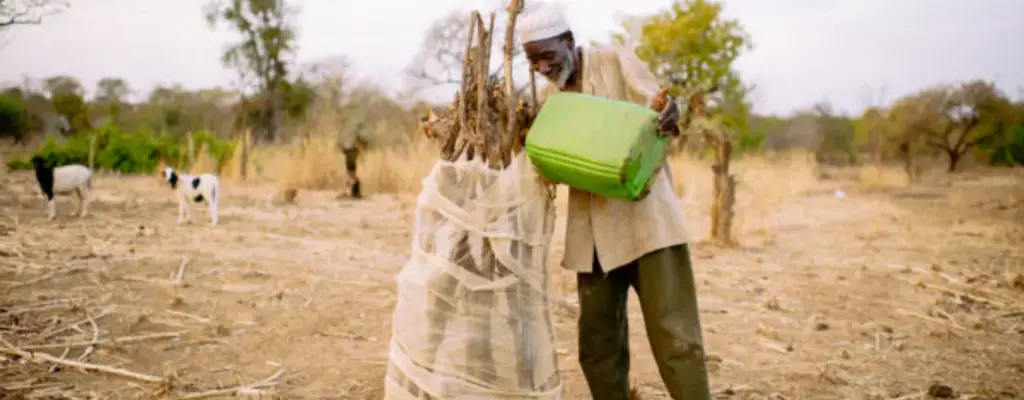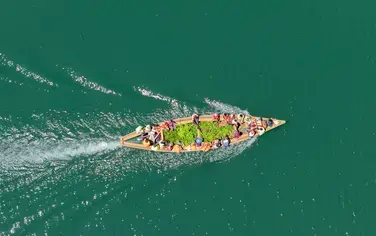This artricle originally appeared on Landscapes News here.
By Gabrielle Lipton
Goal: Bring 100 million hectares of land in Africa under restoration by 2030
Origin story: The African Forest Landscape Restoration Initiative (AFR100) was launched in 2015 at the Global Landscapes Forum in Paris as a country-led effort among African nations. The initiative was endorsed by the African Union and initially joined by 10 countries committing 31.7 million hectares of land.
Current status: More than 27 countries have committed 111 million hectares, bringing commitments to 11 percent more than AFR100’s restoration target. There are 39 technical and financial partners, headed by the African Union’s economic development program the New Partnership for Africa’s Development (NEPAD). The partners couple with countries to establish ‘task forces’ to carry out restoration efforts.
About the money: Public financial partners include the German Federal Ministry for Economic Cooperation and Development (BMZ), the Global Environment Facility (GEF) and the World Bank, the latter of which alone aims to invest USD 1 billion in institutions in 14 countries. Private partners have so far earmarked USD 481 million, led by Ecoplanet Bamboo, which has committed to investing USD 175 million by 2020 in initiative efforts.
Among the other commitments: AFR100 accounts for more than half of the current commitment to the Bonn Challenge. It also contributes directly to achieving Sustainable Development Goals 1, 2, 5, 6, 15 and 17; and more broadly to the Paris Agreement on climate change.
Progress reports: There is no centralized tracking system for countries’ progress on their AFR100 commitments.
Words from an expert: Joary Niaina Andriamiharimanana, Techincal advisor for forest landscape restoration in Madagascar, German Corporation for International Cooperation (GIZ)
On successes so far
“Africa has by far the biggest potential for forest landscape restoration worldwide, with an estimated 700 million hectares of degraded land and forests. AFR100 has been key to kickstarting the restoration movement in Africa. Pledges now stand at a very impressive 111 million hectares. We can say that this fact in itself is a loud and clear signal from partner governments. They want to build momentum, mobilize resources, and scale up restoration across Africa.
“Important steps are already underway in frontrunner landscapes. For example, Malawi has dedicated USD 7 million of its own national budget to finance forest landscape restoration (FLR), and Rwanda has tripled its own FLR spending over the past six years.
“We also need more successful approaches such as ‘farmer-managed natural regeneration’ (FMNR), a low-cost, farmer-to-farmer approach developed by local Burkinabe farmer Yacouba Sawadogo and Tony Rinaudo at World Vision. This helped to restore vegetation cover on 50,000 square kilometers throughout southern Niger, Burkina Faso, and other member countries of AFR100. Farming communities are leading the way in Niger as the restoration movement continues to grow and nurture an entire generation of young restoration activists.”
On challenges
“As AFR100 enters its fourth year, all partners are keenly aware that for FLR to spread, we need transformational changes. Overseas development assistance alone will not suffice; we need to bring the private sector on board. Governments should provide the framework conditions that enable cross-sector planning and restoring.
“While we scale the restoration movement up to the continental level, it’s also important to scale it down so that local communities feel included. We can’t meet AFR100’s ambitious goals or convert strong national frameworks into action on the ground without buy-in from local communities.
“For the AFR100 pledges to come true, countries will have to find ways to make FLR a social movement, building strongly on the needs of Africa’s youth.
“Many transformations need to take place to help restore degraded lands and forests. Good governance of natural resources is key, along with land rights. There must be more sector policies consistent with restoration targets, and we must create a solid environment for both private- and public-sector investments.”




